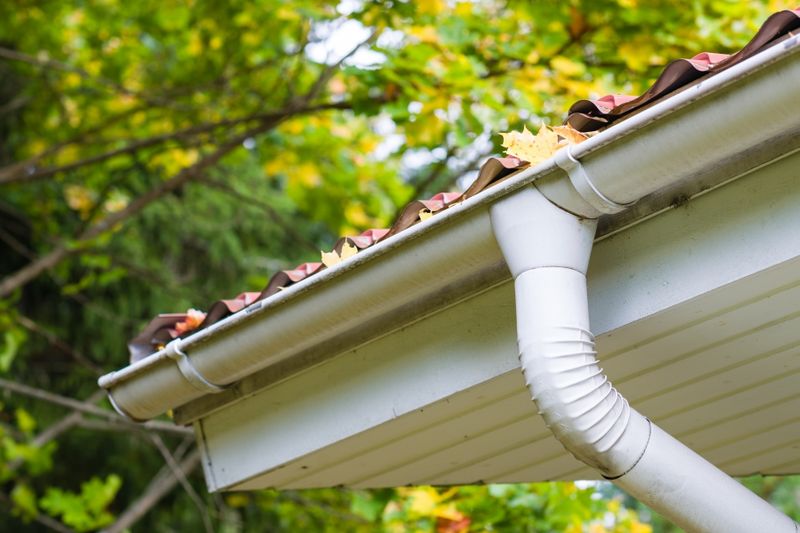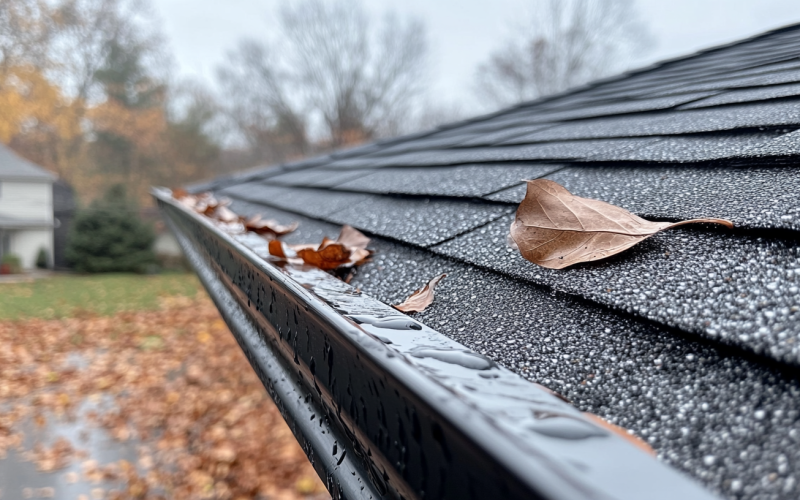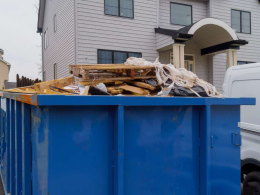Maintaining your eavestroughs is one of those home maintenance tasks that can be easily overlooked but plays a crucial role in keeping your house in top shape. Clogged or damaged eavestroughs can lead to water damage, foundation issues, and even pest infestations. If you’re not cleaning and maintaining them regularly, you’re risking more than just an aesthetic issue — it can lead to costly repairs.
In this step-by-step guide, we’ll walk you through the essential tips and techniques for cleaning and maintaining your eavestroughs. This process isn’t just about making your home look nice but protecting your investment.
Why is Eavestrough Maintenance Important?
Eavestroughs are designed to channel rainwater away from your home’s foundation. Without regular maintenance, debris like leaves, dirt, and twigs can accumulate and block water flow. Over time, clogged gutters can cause serious problems, such as:
- Water Damage: Overflowing gutters can cause water to seep into your roof, siding, or foundation, leading to rotting wood, mould growth, and structural damage.
- Foundation Issues: Improper drainage can cause water to pool around your foundation, increasing the risk of cracks or settling.
- Pest Infestations: Standing water in clogged gutters attracts insects like mosquitoes and can become a breeding ground for rodents and birds.
Regularly cleaning and maintaining your eavestroughs can help you avoid these issues and extend the lifespan of your gutters.
Opting for professional services such as Eavestrough by Sunik Roofing ensures your gutters remain clear and functional, preventing these common issues before they start.
Tools and Supplies You’ll Need

Before you begin, gather the necessary tools and supplies to make the process efficient and safe:
- Ladder (extendable to reach the roofline)
- Work gloves
- Garden trowel or gutter scoop
- Buckets or trash bags
- Garden hose
- Plumber’s snake (for clearing blockages in downspouts)
- Safety goggles
- Rubber mallet (if eavestroughs need adjusting)
- Gutter guards (optional)
Safety Tip: Always prioritize safety when cleaning your eavestroughs. Use a sturdy ladder on level ground, avoid working on wet or windy days, and consider having someone hold the ladder for added stability.
Step-by-Step Guide to Cleaning Your Eavestroughs
Set Up Your Ladder Safely
Position your ladder securely on a flat surface, making sure it’s tall enough for you to reach the eavestroughs without overextending yourself. If you’re cleaning a two-story house, using an extendable ladder designed for higher elevations is best. Always face the ladder directly and avoid leaning to one side while working.
Remove Large Debris
Start by removing large debris such as leaves, twigs, and dirt from the gutters. Remove the material using gloves, a garden trowel, or a gutter scoop, and place it into a bucket or trash bag. Work your way around the house, cleaning small sections at a time to prevent overloading your bag or bucket.
Tip: Be thorough but gentle while scooping debris to avoid damaging the gutter material.
Flush Out the Remaining Dirt with Water

Once most debris is removed, use a garden hose to flush out any remaining dirt or small particles. Start at the end furthest from the downspout and work toward it, ensuring a steady water flow through the eavestrough.
If you notice that water isn’t draining properly, there’s likely a blockage in the downspout.
Clear Blocked Downspouts
Clogged downspouts can cause water to back up and overflow from your gutters. If the water from the garden hose isn’t flowing freely through the downspout, you may need to clear it manually.
- Remove the downspout’s bottom elbow and use a plumber’s snake to dislodge any blockages.
- You can use a high-pressure hose attachment to blast the debris out for lighter blockages.
- Reattach the elbow once the blockage has been cleared.
Inspect for Damage
While you’re up there, take the time to inspect the eavestroughs for any signs of damage. Look for cracks, holes, sagging sections, or rust spots. If you notice any issues, address them immediately to prevent further deterioration.
- Sagging gutters can often be fixed by adjusting the gutter hangers or brackets. A rubber mallet can help reposition any misaligned sections.
- Small cracks or holes can be sealed with gutter sealant, which is available at most hardware stores.
Adjust the Gutter Slope if Necessary
Eavestroughs should slope slightly toward the downspout to allow for proper drainage. If you notice standing water in the gutters after cleaning, they may need re-sloped.
- To adjust the slope, loosen the gutter hangers and slightly tilt the gutter toward the downspout before tightening them again.
- Check the water flow with your hose to ensure it’s draining correctly.
Effective Eavestrough Maintenance Practices
Cleaning your eavestroughs is only part of the maintenance routine. Regular inspections and preventative measures will help keep them in excellent condition. Here’s what you should do after each cleaning session:
Install Gutter Guards
If you want to minimize the frequency of cleaning, consider installing gutter guards. These mesh covers fit over your eavestroughs, preventing debris from entering while allowing water to pass through. Gutter guards are especially beneficial in areas with heavy leaffall or storms.
Schedule Regular Cleanings
How often you clean your eavestroughs depends on your environment. Homes surrounded by trees will require more frequent cleanings, especially in the fall. Generally, clean your gutters at least twice a year — once in the spring and once in the fall.
Check for Leaks
After heavy rain or snowfall, check your gutters for leaks or overflowing water. If you spot any leaks, apply gutter sealant to the affected areas or replace damaged sections.
Ensure Proper Water Flow
After each cleaning, use a garden hose to test the water flow through your downspouts. Proper water flow indicates your gutters are clear of blockages, while slow drainage suggests further investigation is needed.
Inspect Roof Shingles
Inspecting the roof shingles near the eavesrough is a good idea as part of your gutter maintenance routine. Broken or missing shingles can allow debris to fall into your eavestroughs, accelerating clogging.
Prevent Pest Infestations
One common issue with eavestroughs is that they can attract pests like mosquitoes and insects if improperly maintained. Installing gutter guards helps reduce this risk, but it’s also important to regularly clear out debris to avoid standing water, which can become a breeding ground for pests.
For more insights on preventing pests from nesting in your gutters, visit this helpful guide on keeping insects out of gutters.
Signs It’s Time to Call a Professional

While cleaning your eavestroughs is generally a DIY-friendly task, there are situations where it’s better to call in a professional. Here are some signs that it’s time to get expert help:
Severely clogged downspouts
If they remain clogged after several attempts to clear them, a professional service may be needed to use more advanced tools.
Extensive gutter damage
If you notice large sections of your eavestroughs sagging, rusted through, or damaged beyond repair, it’s time to call a contractor.
Leaky gutters
Persistent leaks that can’t be fixed with gutter sealant may require professional repair or replacement.
Inaccessibility
Professional cleaning services offer a safe and effective solution if your home is more than two stories tall or you are uncomfortable working at heights.
Conclusion
Keeping your eavestroughs clean and well-maintained can save you from significant repair costs and water damage. With the right tools, patience, and a routine maintenance schedule, you can ensure your eavestroughs work effectively to protect your home year-round.
By following these steps, you’ll extend the life of your eavestroughs, maintain the value of your home, and avoid potential water damage. Whether you’re an experienced DIYer or a first-time homeowner, a little attention to your gutters goes a long way.
Don’t have the time or feel unsure about cleaning your gutters? Consider contacting a professional for regular maintenance to keep your home in peak condition.











